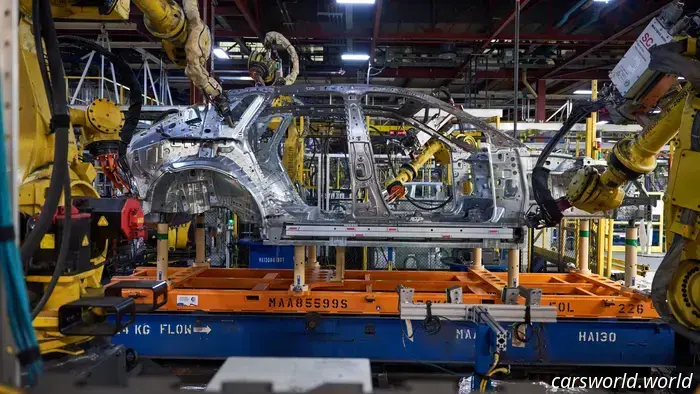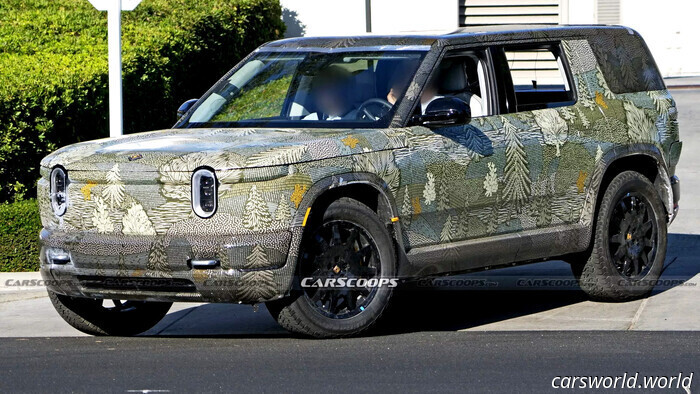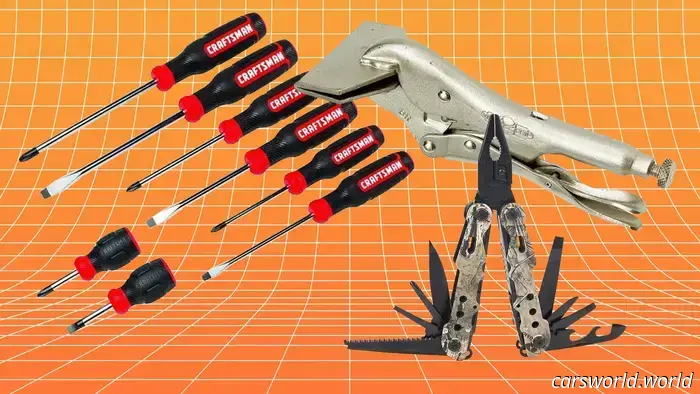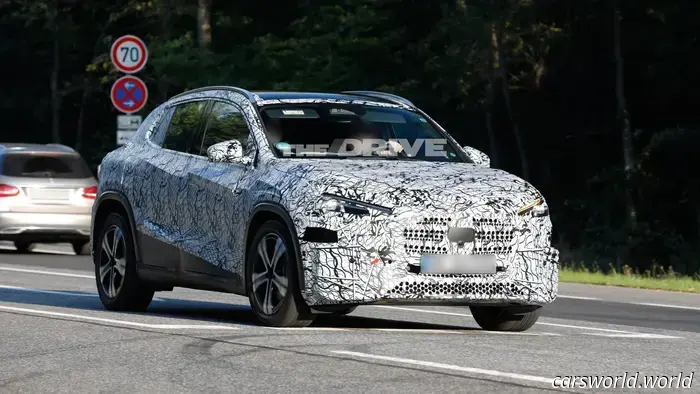
GM's Next-Gen Electric Vehicles: A Dual Approach to Optimize Efficiency and Space
Cadillac Lyric Assembly at GM
The latest automotive news and reviews, straight to the point
Subscribe to our free daily newsletter to receive the most important stories delivered directly to you every weekday.
General Motors recognizes the shortcomings of its current electric vehicles and is fully committed to resolving the key issues with its upcoming models.
During the launch of the 2026 Cadillac Lyriq-V, Vehicle Dynamics Performance Integration Engineer Alexander Doss shared with The Drive that "packaging and mass" are the primary focus areas as the team begins development on future electric vehicles.
Doss mentioned that the team aims to improve the efficiency of the vehicle architectures, extending to both the metal structures and electrical systems, starting from the very basics.
From the 2025 Cadillac Escalade IQ to the Vistiq, as well as the Chevrolet Blazer EV and Equinox EV, GM's latest EV lineup is not only competitive but also includes many class leaders, which is reflected in their sales figures.
However, nearly all of these models suffer from excess weight and, at best, are burdened with subpar packaging. Only the larger EVs, such as the Cadillac Escalade IQ, Chevrolet Silverado EV, GMC Sierra EV, and Hummer EV, feature front trunks. Despite the long hoods of the Cadillac Vistiq and Lyriq, they do not include a front trunk. Opening the hood reveals a series of plastic covers concealing the front electric motor.
Each GM EV has an excessively long dashboard that, at times, appears unevenly shaped due to the depth of the covering. This design choice is due to the placement of certain vehicle cooling systems and HVAC controls beneath the dashboard panel.
Doss explained that the current packaging approach resulted from GM's decision to adopt a single platform to accommodate various vehicle sizes. Technically, this includes two platforms for larger trucks and SUVs that have front trunks, while other models utilize a different one. Nevertheless, there's still a sharing of common parts across these platforms.
Doss confirmed this strategy was implemented to accelerate the development of EVs to market by utilizing shared components, particularly those not easily visible. This commonality allowed GM to reduce costs and development time, enabling the quick rollout of a range of EVs. However, this had consequences for packaging and efficiency.
Details on how GM’s future EV architecture will tackle the current packaging and weight issues were not disclosed by Doss. Nonetheless, he emphasized that the one-platform strategy for different-sized vehicles has contributed to these prevailing challenges.
Have a tip on next-gen products? Reach out to us at [email protected]

Other articles
 How and Why This Porsche Cayman Sports a Body-Wrap Design
A skilled custom rug artisan transformed their Porsche into a piece of tufted artwork. Rest assured, it also features a quick-release mechanism for removal.
How and Why This Porsche Cayman Sports a Body-Wrap Design
A skilled custom rug artisan transformed their Porsche into a piece of tufted artwork. Rest assured, it also features a quick-release mechanism for removal.
 Rivian R2 Seeks to Conquer Europe with Competitive Pricing and a Luxurious Experience | Carscoops
RJ Scaringe has confirmed that the R2 will be introduced in right-hand drive markets, such as the UK, representing a significant advancement in the company’s global expansion efforts.
Rivian R2 Seeks to Conquer Europe with Competitive Pricing and a Luxurious Experience | Carscoops
RJ Scaringe has confirmed that the R2 will be introduced in right-hand drive markets, such as the UK, representing a significant advancement in the company’s global expansion efforts.
 Tool Offers Below $20: DeWalt, Craftsman, and Others Discounted by Over 40% for Early Prime Days
Several quality name-brand tools are being offered at discounts exceeding 40% during Amazon's October Early Prime Days event.
Tool Offers Below $20: DeWalt, Craftsman, and Others Discounted by Over 40% for Early Prime Days
Several quality name-brand tools are being offered at discounts exceeding 40% during Amazon's October Early Prime Days event.
 This May Not Be An Actual Ferrari, But It Comes With A Genuine Ferrari Price Tag | Carscoops
Similar to an authentic 250 Testa Rossa, this vehicle is equipped with a naturally aspirated V12 engine.
This May Not Be An Actual Ferrari, But It Comes With A Genuine Ferrari Price Tag | Carscoops
Similar to an authentic 250 Testa Rossa, this vehicle is equipped with a naturally aspirated V12 engine.
 Check Out the Top DeWalt Tool Deals for Early Amazon Prime Days
DeWalt power tools, hand tools, and accessories are currently available at discounted prices on Amazon.
Check Out the Top DeWalt Tool Deals for Early Amazon Prime Days
DeWalt power tools, hand tools, and accessories are currently available at discounted prices on Amazon.
 Spotted: The 2027 Mercedes-Benz GLA Appears Impressive Up Close
We anticipate the arrival of the refreshed Mercedes crossover shortly.
Spotted: The 2027 Mercedes-Benz GLA Appears Impressive Up Close
We anticipate the arrival of the refreshed Mercedes crossover shortly.
GM's Next-Gen Electric Vehicles: A Dual Approach to Optimize Efficiency and Space
As General Motors wraps up its deployment of existing electric vehicles, the company is already redirecting its attention to the future.
